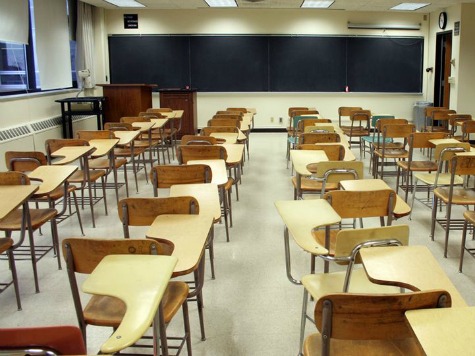The Texas Constitution places the obligation of educating Texas children upon the state Legislature. Article VII states: “A general diffusion of knowledge being essential to the preservation of the liberties and rights of the people, it shall be the duty of the Legislature of the State to establish and make suitable provision for the support and maintenance of an efficient system of public free schools.”
However, what does “public free schools” mean? You couldn’t blame someone for thinking that the Texas Constitution established the school districts we have today, but it didn’t. In a recent report, Kent Grusendorf shows that “public free schools” were not originally state-run schools, but in fact community schools that allowed any group of parents to form a school, hire a teacher, and seek reimbursement from the state. In a system like this, parents had more choices in their child’s education than we do today.
This system, however, was not without difficulties. By 1879, Texas was spending one fourth of its revenue on these schools, and the debt they were causing was substantial. Then-Governor Oran Roberts refused to continue funding an inefficient system, and cut spending by a third until the schools were reformed. Those reforms came in 1883 when the state constitution was amended to allow counties to form school districts for the first time, and gave these districts the power to collect property taxes.
Today, Texas schools are again inefficient — not because they lack money, but because they lack competition.
Texas schools educate over 5 million children from Kindergarten through 12th grade, whereas private and charter K-12 schools educate 285,000 and 190,000 children, respectively. There are, without a doubt, excellent state schools in Texas. However, there are also bad schools, and some students are trapped in them.
A better situation would be if parents could transfer their children to private school of their choice, but the trapped students are most often from low-income families who cannot afford a private school tuition.
Charter schools tear down this wall by allowing money to follow the children. This gives these kids a chance to escape the cycle of poverty. The kids know it, their parents know it, and the waiting lists prove it: there are currently over 100,000 children on charter school waiting lists throughout Texas.
These children shouldn’t have to wait for their school to get better — they have the right to a good education from day one.
Fortunately, our state’s constitution is flexible. In its 1995 Edgewood IV ruling, the Texas Supreme Court commented on the 73rd Legislature’s Senate Bill 7. That bill modified the incredibly complex school finance system by trying to equalize property taxes collected by wealthy and poor districts. The Court said, “In Senate Bill 7, the Legislature fulfills its mandate to provide a general diffusion of knowledge by establishing a regime administered by the State Board of Education. The Constitution does not require, however, that the State Board of Education or any state agency fulfill this duty. As long as the Legislature establishes a suitable regime that provides for a general diffusion of knowledge, the Legislature may decide whether the regime should be administered by a state agency, by the districts themselves, or by any other means.”
Texas has committed itself to preserving the rights and liberty of the people by providing for education. In some cases it does so very well, but in some cases children do not excel in our public schools. Parents should run into praise, not prohibitions, when they seek out the best school for their child.
Michael Barba is a Scholar at the Center for Education Freedom at the Texas Public Policy Foundation in Austin, Texas.

COMMENTS
Please let us know if you're having issues with commenting.